Ultimate Guide to Best Bass Combo Amp for Gigging & Practice
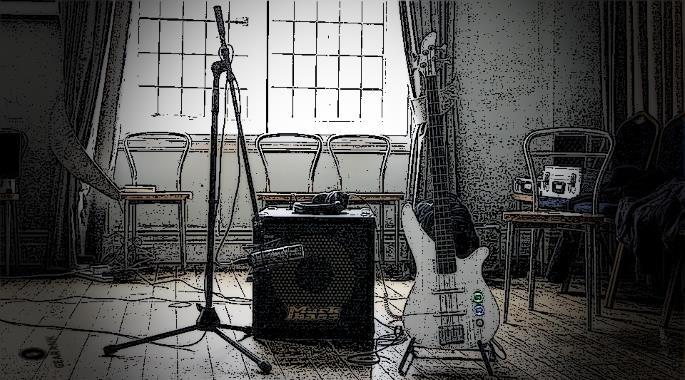
Author & Contributors
Alexander Briones
I have been writing about and researching music gear for many years, all while serving as a music director at my local church. I engage in guitar playing and singer-songwriter stints, in addition to mentoring young musicians and teaching guitar and bass.
Best Bass Combo Amps Under $200
Fender Rumble 25 Bass Combo Amp - 25W
Cons
- Limited projection - not powerful enough to play live with most bands without going through a PA
Pros
- Easy to set up and use
- Great bass practice amp
- Good tone options with its contour switch
Fender is famed for both their guitars and amplifiers and like a lot of well-known companies, the brand has extended into markets beyond the professional sphere, most notably equipment aimed at beginners.
The Fender Rumble 25, while a beginner-level piece of equipment in every sense of the phrase, is powerful enough to be an asset to both beginning musicians and advanced bassists.
Bass practice amps are essential for bassists of any skill level, and this can serve that role nicely. Note that this combo amp won't keep up with a full band playing loudly.
In this price range, the key selling point of this amp is that it has a contour switch. A contour switch changes the contour of a certain frequency range, generally the mid-range. Without getting too technical, this feature basically changes the voicing of an amp which in turn gives you a much wider variety of tones on hand.
This flexibility is rare for an amp in this price range, which makes this one of the better bass amp deals in the entry-level price range. Note that flexibility does become more common in higher price tiers. If you're looking for a stage bass amp, its bigger sibling, the Rumble 500, has a power amp with more volume and features.
The Fender Rumble 25 is a cheap bass amp that is good at what it does. It provides you with a compact and convenient grab-and-go personal bass amp. It is the best bass practice amp in the entry-level price range.
Features
- 25-Watts
- 8” Speaker
- Controls: Master Volume, Bass, Mid, Treble, Overdrive, Contour
- AUX-In and Headphone-Out
- Weight: 21 lbs.
| Website | Source | *Rating Value |
| YouTube | Joe Hart | 90/100 |
| GuitarSquid | Russel Wolfe | 90/100 |
Demo
Hartke HD15 Bass Combo Amp - 15W
Cons
- Not for use in bands
- No effects - just basic EQ
Pros
- Simple and easy to use
- Good home practice amp
- Built-in limiter prevents beginners from damaging the amp
Some of the best bass guitar amps that we are available now are from Hartke. They are highly regarded as one of the premier manufacturers of bass amplifiers, with products that go head to head with any in the industry. However, unlike a lot of practice or entry-level amps in this price range, the Hartke HD15 retains the quality of more expensive amplifiers produced by the company.
The key selling point of this bass combo amp is that it features a built-in limiter. This limiter helps to limit peaks in volume that could damage your amp. This is huge for beginner musicians who may not understand what levels of volume, or in certain cases playing dynamics, can damage an amplifier.
Although it's a really good personal practice amp, it's a bit quieter than the Fender Rumble 25 and definitely not loud enough for jamming with a band unless you put it through a PA system.
The AUX input combined with its headphone output are handy practice features that let you jam along with your favorite tracks. However, it does not come with any effects, and while that may be a limiting factor depending on the genre you play, it does help to keep the price low.
All in all, the Hartke HD15 is the best small bass amp for those who are looking for a budget practice amp.
Features
- 15-Watts
- 6.5” Speaker
- Controls: Volume, Bass, Mid, Treble
- AUX-In and Headphone-Out
- Weight: 16 lbs.
| Website | Source | *Rating Value |
| MusicRadar | Mike Brooks | 100/100 |
Best Bass Amp Under $300
Fender Rumble LT25 Bass Combo Amp - 25W
Cons
- Gets muddy when driven too hard
- The digital models and effects sound better with headphones
Pros
- Its models and DSP effects are great for practicing
- You can create and save your own presets
- Good practice amp - can jam with quiet / acoustic acts
The Fender Rumble LT25 expands on the success of the Rumble series by adding Digital Sound Processing (DSP) to the amp. It expands the already good bass amps of the Fender Rumble line with a versatile bass combo amp. It gives you a lot of good tones in a single amp. You can choose between 15 amp types, 20 effects, and 50 preset sounds, 30 of which are customizable.
The amp section is rated at 25 watts, with a straightforward single channel design that features gain, volume, and 3-band Bass EQ controls.
It drives an 8" speaker and is housed in a 5/8" wooden cabinet with vintage-style textured vinyl covering. Other notable features include having a built-in tuner and USB recording.
What sets it apart in this price range are its amp modeling and DSP features. You can get a wide range of tones out of it. This makes it a good amp for practicing different styles of music. It's a bit like having several different flavors of bass amps in one handy combo unit.
Even though it's only 25 watts, it's reasonably loud, and I could see it being used with quiet acoustic acts at something like a cafe gig. But don't drive it too hard because some of the models sound muddy at full volume, and slap playing lacks that high-end thwack. This is primarily a limitation of the 8" speaker.
When practicing with headphones, however, when you don't need to drive it hard, the amp models come to life, making practice a pleasure.
With the flexibility brought about by its built-in DSP, the Fender Rumble LT25 is a good beginner-friendly amp that can still meet the needs of students as they improve their playing.
Features
- 25-Watts
- 8” Speaker
- 30 Customizable and 20 Hidden Presets
- Controls: Gain, Bass, Mid, Treble, Master, DSP
- AUX-In, Headphone-Out, Footswitch, Micro-B USB
- Weight: 19.2 lbs.
| Website | Source | *Rating Value |
| BassBuzz | csmundell | 90/100 |
Demo
Best Bass Amp Under $500
Hartke HD150 Bass Combo Amp - 150W
Cons
- Very heavy - weighs twice as much as similar 1x15 bass combos & needs two people to lift it safely
Pros
- The tweeter gives it a detailed high-end
- The 15" woofer moves a lot of air
- You can get a surprisingly wide range of tones using the 7-band EQ
- Completely gig worthy
Hartke is well known for great value bass amps, as exemplified by the HD150 combo. For the price, you are getting a 150W amplifier with a 15" speaker and a 1" tweeter - a feature that is hard, if not impossible to find on other amps in its price range.
The addition of a tweeter and the use of paper and aluminum cone on the speaker give this amp a bit more high-end emphasis. This works well with many styles of bass playing. For more control over your sound, Hartke equipped the HD150 with a 7-band EQ.
Other features include built-in limiter, effects loop, and it even has built-in rolling casters for added mobility.
This bass amp combo has a lot more trebly sparkle than the other ones above. The combination of 7-band EQ and a dedicated tweeter really allows you to create great scooped sounds or to simply jack up the high-end as you hear in some slap playing. I've seen other reviews that say the top end is too bright, but that's probably just their personal taste, as I find it quite pleasing. You can also tone it down to get something that sounds a bit like an upright bass.
The big 15" speaker moves a lot of air. This amp has no trouble keeping up with a loud band, and you can even gig with a full band in small to medium venues without having to go through the PA.
The downside is the weight. While it's easy enough to move around on its casters, it's a two-person job lifting it in and out of the band van.
If you're looking for a good value 150W stage amp, then do check out the Hartke HD150.
Features
- 150-Watts
- 15” HyDrive Speaker, 1" Tweeter
- Controls: Volume, Bass, Mid, Treble, 7-Band EQ
- AUX-In, Headphone-Out, Line-Out, Effects Loop
- Weight: 66 lbs.
| Website | Source | *Rating Value |
| YouTube | J H | 92/100 |
| Talk Bass | cgull | 80/100 |
Demo
Best Bass Amp Under $750
Fender Rumble 200 Bass Combo Amp - 200W
Cons
- I'm not a fan of the Vintage setting
Pros
- Light enough for one person to lift
- Good for stages from small to big
- Balanced XLR line out
- Versatile tone controls
The Fender Rumble 200, while similar to the other amps in the series, has an interesting extra feature that's not found on other regular Rumble amps; that is the inclusion of a tweeter (the Rumble Stage also has one).
Having an HF driver allows this bass amp combo to reproduce clear treble frequencies, resulting in a sound that's clearer than those with just a 15" woofer. Basically, it's like a tiny speaker just for adding in some high-end sparkle. If you don't want a brighter sound, you can simply turn the tweeter off.
In case you hadn't guessed from the name, the Rumble 200 packs 200 watts of power. Given the wattage, you have enough volume for mid-size venues without needing to DI to the PA. It also has an XLR out in case you need to hook straight into a PA for bigger venues.
Other features include an effects loop, AUX-in, and headphone-out.
Unlike the Hartke HD150, one person can lift this amp on their own, and the handle on top feels secure. I'm sure it will still be working fine years from now.
It has a surprisingly thick tone even with the tweeter on, and it moves plenty of air. This makes the Bright setting sound really modern. I'm not a huge fan of its Vintage bass tones setting, which kills the top end and gives it more of a mid-range voicing - but that's just personal taste and style. Still, it gets close to the classic bass tones that many are looking for. In any case, the EQ is versatile enough to let you sculpt the sound the way you want it.
If you are looking for the best bass amp for gigging, with good portability and projection, then the Fender Rumble bass combo amp is for you.
Features
- 200-Watts
- 15” Speaker
- Controls: Bass, Low Mid, High Mid, Treble, Gain, Drive, Level, Master, Contour, Bright, Vintage
- AUX-Input, Headphone-Output, Footswitch, Line Out, Effects Loop
- Weight: 34.5 lbs.
| Website | Source | *Rating Value |
| YouTube | Kevin D'Abramo | 94/100 |
| GuitarSquid | Maurice Lundgren | 87/100 |
Demo
Best Bass Amp Under $1000
Fender Rumble Stage 800 Bass Combo Amp - 800W
Cons
- Complicated - learning to understand all the features takes time
- Not for you if you don't like navigating menus on an amp
Pros
- Great range of voicings
- The acoustic models are quite good
- The effects are so good you can get rid of your pedalboard
The Fender Rumble Stage 800 is a feature-packed bass combo amp that comes with Digital Sound Processing, which allows for a wide variety of amp models and effects, essentially turning this amp into an all-in-one bass rig.
The amp lets you choose from a wide selection of genre and tone specific presets, and you can also apply effects from a selection of over 40 different bass effects.
And to better support the included digital processing, this amp is equipped with a switchable HF compression tweeter, which allows for trebles that would otherwise be impossible to get from a bass combo amp.
To help you get a good handle on all its features, the amp comes with an LCD color display along with necessary buttons and an encoder dial. You can also wirelessly tweak the settings of the amp via the Fender Tone app. Speaking of wireless, this amp also has Bluetooth compatibility and Wi-Fi connectivity.
Other noteworthy features include a 60-second looper, bundled footswitch, USB direct recording output, and XLR line output.
One drawback of having all these features is that it's quite time-consuming trying to understand them all, take a look at the manual, and you'll see what I mean - you can get a bit lost scrolling through the menu, but you get used to it after a little time.
While many amps provide some kind of modeling these days, this one has two modes for sounding like an acoustic amp. I quite like the Acoustasonic model which is based on their Acoustasonic Amps - it doesn't make your Fender P bass sound like an upright, but it does have a nice character to it. It does however have an Acoustic Sim model which does provide a sound that's heading in that direction.
In fact I'm prepared to go further and say that all the effects are pretty good - I really think this amp has reached the point where you can do away with most of your pedals, although you'll want to keep your preamp if you use one. Even the looper is fairly useful, although I won't be getting rid of my RC-300 anytime soon, but then you don't need a lot of features for bass looping (at least I don't).
At 800 Watts, it already has a lot of power for most venues. Yet it can go even louder by connecting this bass combo amp to external speaker cabinets.
All in all, the Fender Rumble Stage 800 is more than just a bass combo amp, it's an all-in-one rig that is well worth the investment. It is proof of Fender's continued success in producing great bass amps.
Features
- 800-Watts
- 2 x 10” Woofer and Compression Tweeter (Switchable)
- Controls: Gain, Bass, Middle, Treble, Master, LCD Display, Buttons, Rotary Encoder
- AUX-Input, Headphone-Output, Footswitch, Line Out, Effects Loop Send/Return, Footswitch, Extension Speaker
- Weight: 39 lbs
| Website | Source | *Rating Value |
| BassChat | Raslee | 96/100 |
| YouTube | Sounds Like Ben | 94/100 |
Demo
Things to Consider When Buying a Bass Combo Amp
Every manufacturer uses a lot of jargon in their ads, and most of the time, they are purposefully obfuscated or exaggerated to make a product seem more attractive than it really is. In all reality, bass amplification is actually pretty simple. So long as you know a few simple terms, you'll be able to get a general idea of whether or not an amp will be a good fit for you.
-
Volume is generally measured in wattage because the volume an amplifier will produce is closely tied to its wattage rating. Though with that in mind, volume is a funny thing. More volume doesn't necessarily mean an amp will be more audible, and some types of amps may be significantly more audible than their wattage rating would imply.
Though, as a general rule, a bass player is going to need double the wattage of the guitar players in their band if they're playing larger venues (bars and clubs). For example, if you have two guitarists each running 100-watt solid state bass amplifiers, you're going to want 400 watts (100*2*2=400) to have enough volume to compete with the other instrument(s) in your band without your amp distorting. For smaller venues, like coffee shops, you're probably not going to need more than 100 or 200 watts. Of course, how you EQ your amp, speaker size, and how the speaker(s) is designed will also have an impact.
It is also worth pointing out that having a tube preamp is not as hyped on bass amps as they are on guitar amps. Many of the best bass amps don't utilize tube circuitry. Bass String Gauges can also impact how loud strings respond to playing.
-
Tone controls are a must have on any amplifier, so virtually every amplifier includes them. We’ve just listed the most common EQ and tone shaping controls below for ease of reading. Note that some / few bass amps come with expanded controls, including 4-band EQ, or even 7-band EQ. You can get more tone shaping options by utilizing a pedal or processor that allows for pre post EQ adjustments.
Treble:
Treble controls the high-end frequencies. More treble equals more clarity because high-end frequencies travel through the air easier. However, use this in moderation so you don’t overcrowd the mix.Mid:
Mid is the middle ground between bass and treble. It adds more body to the sound, but it also creates a clear voice. Be especially careful with how much mid you dial in because the guitar is a mid-range focused instrument. Too much mid in the bass will create a mix that feels flabby and unfocused.Bass:
As expected, much of a bass amp's sound quality has to do with how it handles bass frequencies. Bass makes the sound fuller, and because the bass guitar (obviously) is a bass focused instrument it's an incredibly important frequency to have control over. While beginners may want the most bass possible, too much bass can still make your instrument sound muddy.muddy.Scoop/Mid-Shift/Contour
Treble, mids, and bass frequencies usually get separated into three distinct groups. This is solely for ease of use because these three groupings are constructs to allow us to manipulate sound more easily. For example, when you turn a treble control higher, you actually boost a range of frequencies rather than just one.A scoop (which is sometimes known as a mid-shift or contour) changes the base frequencies that are altered when you manipulate the mid-range control. Don't concern yourself with the technicalities of this right now. Rather, just know that if an amp has a scoop or mid-shift control, you have more sounds available to you.
-
More and more amps these days are coming with built-in effects. Some include a variety of different distortion models (based on famous stomp boxes) and modulation effects. And while amp modeling is not as pervasive compared to Guitar Amps, there are now some bass amps that offer this tone flexibility.
With that being said, there is sometimes a tradeoff present when an amp has built-in effects. When resources are spent on effects, other aspects of the amp may suffer. This can either mean that the amp is built with lower-quality materials, ships with a smaller speaker, or is more expensive than an amp of similar quality that lacks these effects. There's also the downside of some of the amp models and effects being sub-par or impractical for bass guitar use.
So, whether or not you should look for an amp with built-in DSP really depends on what it is you're going to be doing. Amp modeling and effects aren't used with the bass to the extent that they are with the guitar, so while the added flexibility may be attractive, you don't need effects to sound better.
Should you choose to go with an amp without built-in effects, we would still recommend that you consider getting a tuner pedal and a compressor. Another option is to get a Bass Preamp with built-in effects.
-
At the risk of over simplifying the topic, a bigger speaker will produce more bass frequencies and give your tone more depth. A smaller speaker will have a more focused and punchy tone. A 12” speaker is considered to be a happy medium between the two extremes.
When thinking about which speaker size will best suit your needs, you first have to realize that bassists get great results with everything from 10” to 15” speakers. It’s not a question of what genre you play, your technique, or even your instrument. It’s all about what you want to hear.
Though with that in mind, should you purchase an amp with a speaker that is smaller than 10” you may find that your tone is a bit thin. This generally isn’t a huge issue, because amps with sub-10” speakers are generally for beginners rather than performing/recording musicians. However, it is something to keep in mind.
-
An XLR DI output allows you to plug your amp directly into a P.A. console. This feature is useful because it allows the front-of-house sound technician / engineer to shape the volume and frequency response of your amplifier. The impact the inclusion (or lack) of this feature will have on your experience as a musician is largely going to depend on the venues you play and whether or not you need to go through a PA system.
If you rarely gig, or do small gigs exclusively, you’re not going to stand to gain much from this feature. However, it can be a life saver if you’re playing larger gigs because you don’t have to worry about miking an amp.
A DI also allows you to plug your amp directly into a recording interface, which makes digital recording easier if you don’t have a wide selection of microphones on hand.
Many amplifiers state that they have “XLR-Out”, or something along these lines. This also qualifies as DI, so if you see a manufacturer say “XLR-Out” or “DI” know that you can plug your amp into a P.A.
You can also buy a separate DI Box or Bass Preamp with a DI built-in.
-
With their big woofers and cabinets, combo bass amps are generally heavy. Thankfully, many manufacturers do put careful thought in designing their amps to be portable. Some do it by utilizing lightweight materials, others focus on improving the handles, while some even add rolling casters on the amp itself. If you're planning on playing regularly on different venues, you will have to balance your volume and bass tone requirements with sensible portability.
This guide is focused on combo bass amps, but there are other types of bass amps available. Including compact amp heads like the Darkglass Electronics Microtubes. Those who want to travel light can also go for a bas preamp like the Aguilar Tone Hammer and go straight to PA.
-
For those who record at home, getting a bass amp combo that can simplify the recording process can be a big plus. This is where bass amps with USB recording output come in as a very convenient solution. Other modern technologies like Bluetooth connectivity can make streaming tracks more convenient, which in turn can help improve your overall practice and jamming experience. Old school connectivity like Aux input and headphones out are still essential, especially if you want to do silent practice. Since the low frequency sound of bass guitars are hard to contain, it's best to use a headphone amp for quiet practice. Note that a headphone amp will not have the same feel and rumble that you get from an actual amp.
-
Combo amps combines the amplifier circuitry with a speaker in one cabinet. This makes removes the need for speaker matching, and makes them convenient to use. They are perfect for beginners who are learning the ropes, and can also benefit pros who just want to plug and play their bass.
-
While it can work, I strongly advice not to plug your bass into a guitar amp. Bass guitars require more low frequency response, which guitar amps are not designed to handle. This means you won't get the full sound of your bass, and you will end up damaging your guitar amp. A keyboard amp with their wider frequency range can be a good alternative, but it won't perform better than a dedicated bass amp.
Power Rating (How Loud Your Amp Should Be)
Tone Controls
Effects and Amp Modeling
Speaker Size
Built-in DI
Portability
Modern Connectivity
Are Combo Amps Good for Bass Guitars?
Can Guitar Amps be used for Bass Guitars?
Best Bass Amp Selection Methodology
The first edition was published in 2017. The current edition was published on July 5, 2023.
We started by compiling a list of bass amps (excluding bass head amps) with good ratings from US based retailers in the sub $1000 price range. We ended up with 56 combo bass amps from popular brands like Gallien Krueger, Hartke, Fender, Ampeg, Orange and more. All these amps are readily available from major online retailers in the USA. We then collated reviews, ratings, recommendations and forum discussions about each one and processed the data with the Gearank Algorithm to produce a rating score out of 100 for each amp. We analyzed just over 19,900 sources during this process, these includes user and expert review results. Finally, we selected the highest rated options in each price bracket above to recommend. For more information about our methods please read How Gearank Works.
About the Author and Contributors
Here are the key people and sources involved in this guide's production - click on linked names for information about their music industry backgrounds.
Lead Author & Researcher
Alexander Briones
I have been writing about and researching music gear for many years, all while serving as a music director at my local church. I engage in guitar playing and singer-songwriter stints, in addition to mentoring young musicians and teaching guitar and bass.
As a music director, I have to learn, play and teach bass parts to our team of musicians. And while I mainly play guitar, I've enjoyed playing bass on many occasions, usually to sub when the bassist is absent. My favorite bass is a decades old P-bass clone from the '70s, called the Yamaha Pulser PB-400. It has been used by generations of musicians at our church and it still plays and sounds great. I also enjoy playing my brother's 5-string Yamaha TRBX 305, which is a big departure to a traditional 4-string P-bass.
Contributors
Alden Acosta: Product research.
Jason Horton: Editing and Illustrating.
Media
Main/Top Image: Produced by Gearank.com based on a photograph in the public domain.
The videos above have been embedded in accordance with YouTube's Terms of Service.
The individual product images were sourced from websites, promotional materials or supporting documentation provided by their respective manufacturers.



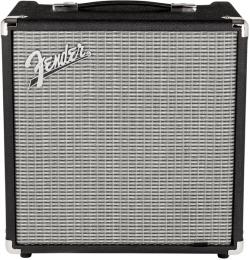
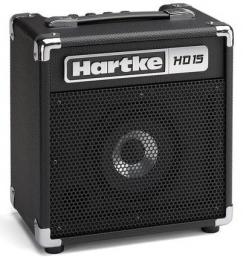
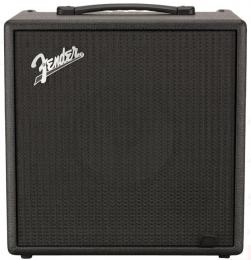
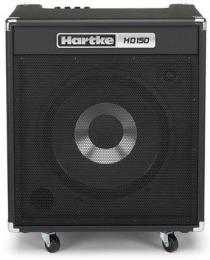
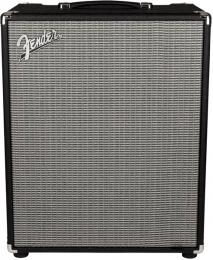
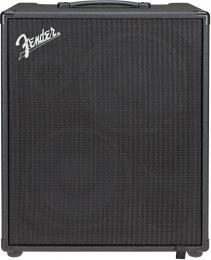
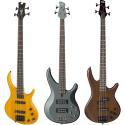
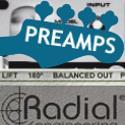
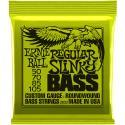
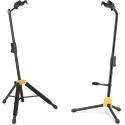
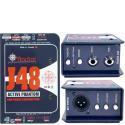
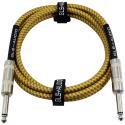
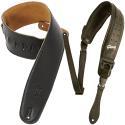
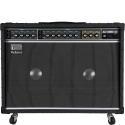

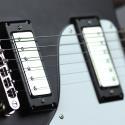
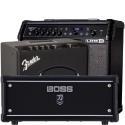
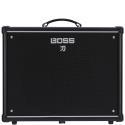
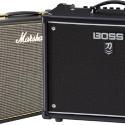
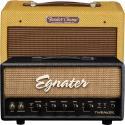 The Best Small / Low Watt
The Best Small / Low Watt 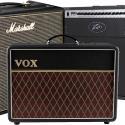
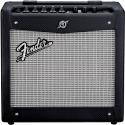
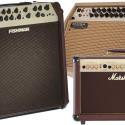
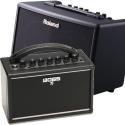





Comments
The following bass amps came
Submitted by Jason Horton on
The following bass amps came off our recommended list when we published the September 2022 Edition:
Publication of our October
Submitted by Jason Horton on
Publication of our October 2021 Edition resulted in the following amps coming off the recommended list above:
Our November 2020 update
Submitted by Jason Horton on
Our November 2020 update resulted in the following amps coming off the recommended list above, but you can still see our analysis of them:
As a result of our November
Submitted by Jason Horton on
As a result of our November 2019 update the following bass amps came off our recommended list above but you can still read our analysis of them:
The following amp has been
Submitted by Jason Horton on
The following amp has been removed from the recommended list above due to a price increase, but you can still read our analysis of it: Gallien-Krueger MB112-II.
I really wish manufactures
Submitted by Don Barry (not verified) on
I really wish manufactures would be forced spec the amp's SPL (Sound Pressure Level or volume) rather than watts. To compare watts you need to know the efficiency of the driver. Its like light bulbs, my 17 watt LED lamp is much brighter than my 60 watt incandescent, so now they rate lamps by Lumens.
Today we removed the
Submitted by Jason Horton on
Today we removed the following amp from our recommended list above due to a lack of availability, but you can still read our analysis of it:
As part of the August 2018
Submitted by Jason Horton on
As part of the August 2018 update to this guide the following bass amps were removed from our recommended list above but you can still read about them here: